*My posts may contain affiliate links, which means I may receive a small commission, at no cost to you, if you make a purchase through a link! Thank you for supporting my website!*
Last updated on March 15th, 2024 at 12:23 pm
Wondering whether a waterfall countertop or a regular one is better? Well, look no further because I have your answer!
| Waterfall Countertop | Regular Countertop |
|---|---|
| High-end / designer looking | More budget-friendly |
| Covers unfinished ends of cabinets | Less work to install |
| Protects the sides of cabinets from normal wear and tear | Timeless |
| Easier to keep the sides of cabinets clean | Variety of materials can be used (wood, marble, laminate, etc) |
| Can add seating to the sides of the island | |
| Can have different edges on the countertop if desired (such as bullnose) |
Now that we’ve got the basics out of the way, let’s break into the details further so you can choose the best countertop for your kitchen island.
Let’s dive in!
Quick Navigation: Waterfall Countertop Vs Regular
- What Is The Difference Between A Waterfall Countertop & A Regular One?
- Benefit One: Waterfall Countertops Increase The Perceived Value Of The Kitchen More Than A Regular Countertop
- Benefit Two: Waterfall Countertops Are A Great Way To Cover Unfinished Ends Of Cabinets
- Benefit Three: Waterfall Countertops Protect The Sides Of Cabinets From Normal Wear & Tear
- Benefit Four: Waterfall Countertops Make It Easier To Clean The Sides Of Cabinets
- Drawback One: Waterfall Countertops Are Significantly More Expensive Than Regular Countertops
- Drawback Two: Waterfall Countertops Are More Work To Install Than Regular Countertops
- Drawback Three: Waterfall Countertops Are “Trendy” / Don’t Fit Into Every Kitchen Design Style
- Drawback Four: Waterfall Countertops Can Only Be Made Using A Limited Number Of Materials
- Drawback Five: Waterfall Countertops Limit Seating Only To The Back Of The Kitchen Island
- Drawback Six: Waterfall Countertops Typically Only Use One Edge Style
- Other FAQs About Waterfall Countertops
- Final Thoughts
What Is The Difference Between A Waterfall Countertop & A Regular One?
First, let’s discuss the difference between a waterfall countertop and a regular kitchen island countertop.
A regular island countertop is made up of one solid piece of countertop material (laminate, quartz, granite, marble, wood, concrete, etc) that sits on top of base cabinets and extends past the cabinets to an overhang for seating.
A waterfall countertop is made up of three different pieces of countertop material (typically quartz, granite, or marble) where one piece sits on top of the base cabinets like a regular countertop would and the other two pieces are connected by a mitered joint, and epoxy to make the countertop appear to seamlessly flow to the ground.
The extension of the countertop (and its pattern) down the sides of the cabinets creates a seamless “waterfall effect”.

There are several pros and cons associated with each type of island countertop that I’ll explain further below.
Benefit One: Waterfall Countertops Increase The Perceived Value Of The Kitchen More Than A Regular Countertop
The biggest benefit of a waterfall countertop over a regular countertop is that they increase the perceived value of a kitchen.
Regular countertops are standard/expected on a kitchen island. Waterfall countertops, on the other hand, are only typically seen in more upscale, modern homes. So if you want your kitchen island to reflect the latest and greatest kitchen island trend, then a waterfall countertop is a must.
In addition, waterfall countertops are significantly more expensive than regular countertops, so they do add more value to a kitchen. But they don’t necessarily add enough value to justify the extra cost if the market is not requiring this type of countertop.
Looking at the comps of other homes in the neighborhood and what type of island countertops they have is the best way to determine if a waterfall kitchen island is worth it or not.
Benefit Two: Waterfall Countertops Are A Great Way To Cover Unfinished Ends Of Cabinets
The next benefit of a waterfall countertop over a regular countertop is that they cover unfinished cabinet ends.
Some cabinets come unfinished and need the sides covered up. One way to easily cover the sides is to add a waterfall countertop.
The side pieces of the waterfall will cover the unfinished edges and provide a more high-end finished look than other types of cabinet coverings will do.

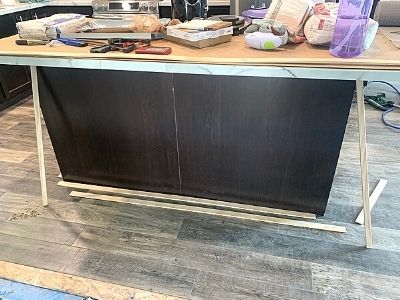
Benefit Three: Waterfall Countertops Protect The Sides Of Cabinets From Normal Wear & Tear
The next benefit of a waterfall countertop over a regular countertop is that they protect the sides of the cabinets from normal wear and tear.
Somehow, the sides of cabinets get kicked or scuffed up over time. If you have a waterfall countertop, though, the quartz or granite is durable enough to protect the cabinets from any of this normal wear and tear.
Thus, this is a great way to extend the life of cabinets beyond their normal expectation.
Benefit Four: Waterfall Countertops Make It Easier To Clean The Sides Of Cabinets
The final benefit of a waterfall countertop over a regular countertop is it is easier to clean the sides of cabinets.
Since the sides of your cabinets will now be covered with a countertop, you can wipe down the sides of your island cabinets as easily as you can wipe down a regular countertop.
This, again, will help make the cabinets last longer than other types of side coverings might.
The benefits of waterfall countertops are pretty good, but there are some significant drawbacks to using them that you’ll want to note before making your decision.
Drawback One: Waterfall Countertops Are Significantly More Expensive Than Regular Countertops
The biggest drawback of a waterfall countertop over a regular countertop is its cost.
The material for a waterfall countertop costs the same as a regular countertop, but you need much more square footage of it to extend it down the sides of the cabinets. So, the overall cost of the extra material is automatically going to increase the cost to add this type of countertop to your island.
In addition, it requires more labor to install a waterfall countertop because the mitered corners of the edge pieces need to be glued together with silicone and epoxy to make it look like it’s a single piece of countertop. Then the installer has to wait at least 30 minutes before he can come back to buff the excess epoxy off the countertop to finish it off.
So the cost will go up because of the amount of time it takes to do these extra steps compared to a regular countertop that is glued with silicone or screwed into place within a few minutes.
And finally, the biggest additional expense to a waterfall countertop is the CNC fabrication required to make the pattern match perfectly across the top and sides. This feature is important if you want a true “waterfall” look because the fabrication will make the pattern match so perfectly, it will look like the countertop was always one single piece of material.
The fabrication cost alone can add another $2,500 to an already more expensive countertop. This is why I highly recommend looking at the other homes in the area to see if they have waterfall countertops that can justify this extra cost.

Drawback Two: Waterfall Countertops Are More Work To Install Than Regular Countertops
The next drawback of a waterfall countertop over a regular countertop is that they are more work to install than regular countertops.
I touched on this point above. Regular countertops are installed either by:
- A bead of silicone ran across the tops of the base cabinets and the countertop set on top (quartz, marble, granite, or concrete are installed this way) or
- Being screwed into the base cabinets from underneath (laminate and butcherblock are installed this way
A pro or a DIYer can accomplish the installation in a matter of minutes.
Waterfall countertops, on the other hand, have a few more steps (which adds to their labor cost). To install them, you need to:
- Silicone along the tops of the base cabinets and set the top piece of quartz in place
- Silicone along the bottom of the side piece of quartz and spread a thick coat of color-matched epoxy along the mitered edge before pressing it up against the side of the cabinet and lining it up with the mitered edge of the top piece making sure epoxy squishes out at the seam to help fill it in
- Spreading more epoxy over the remaining gaps in the mitered joint to fully fill it in
- Repeat step 2 for the other side
- Wait for the epoxy to dry then buff the top and sides of the countertop along the mitered joints to remove the excess epoxy
While none of this is overly difficult either, it does take more time to accomplish (which adds to the cost of installation).
Drawback Three: Waterfall Countertops Are “Trendy” / Don’t Fit Into Every Kitchen Design Style
The next drawback of a waterfall countertop over a regular countertop is that they can be considered trendy.
A regular kitchen island countertop is considered timeless. It has been the standard countertop style for centuries, and it likely will be for centuries to come.
Waterfall countertops, on the other hand, are more of a modern countertop style and are often only seen in higher-end, luxury homes.
Whenever a design style is on the “trendier side”, I try to avoid it because I don’t enjoy wasting money a few years later when I want to redo it because it’s now out of style.
Though, if you absolutely love the look of waterfall countertops, then who cares what is considered trendy or timeless. Put in your home whatever you enjoy best because it’s your hard-earned money paying for it!
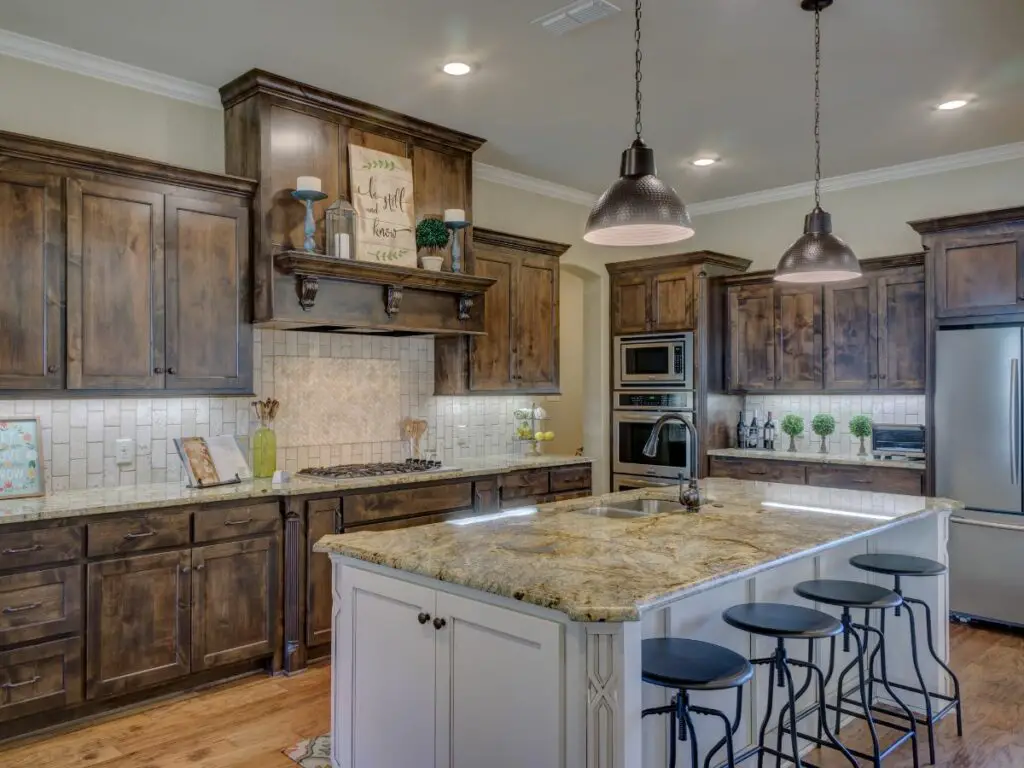
Drawback Four: Waterfall Countertops Can Only Be Made Using A Limited Number Of Materials
The next drawback of a waterfall countertop over a regular countertop is that it typically is only made using quartz (and sometimes granite or marble).
Waterfall countertops look best when quartz is used because the pattern can be fabricated to match perfectly from the top to the sides. The natural veining in granite, marble, and wood messes up the seamless waterfall look, which kind of defeats the purpose of a waterfall countertop.
(They can be made from granite, marble, wood, or concrete but it doesn’t give the full seamless effect, so they often aren’t made out of these materials.)
Regular countertops, on the other hand, can be made from a variety of materials including wood, marble, laminate, granite, quartz, and concrete. Many of these alternative materials are significantly cheaper than quartz or granite, which can also reduce the cost of your island countertop.
Drawback Five: Waterfall Countertops Limit Seating Only To The Back Of The Kitchen Island
The next drawback of a waterfall countertop over a regular countertop is that it limits the number of seats you can have on your island.
Since the countertop extends down the sides of the cabinets, you can’t have an overhang on one end of the island (which is a typical spot to add an extra seat).
If you only wanted seats on the backside of the island, then this is a moot point. But if you want the ability to add more seating on a smaller island, then a regular countertop is a must.
If we went with a waterfall countertop in our kitchen, we would only be able to fit 3 seats on our island. Most families have at least 4 members, so I wanted to make sure we got a 4th seat for when our family grows or when we sell the home.
In addition, I wanted one of the seats to be on the end so my husband and I could sit and comfortably face/talk to each other while we ate (instead of sitting directly next to each other and having to turn to face/talk to each other).
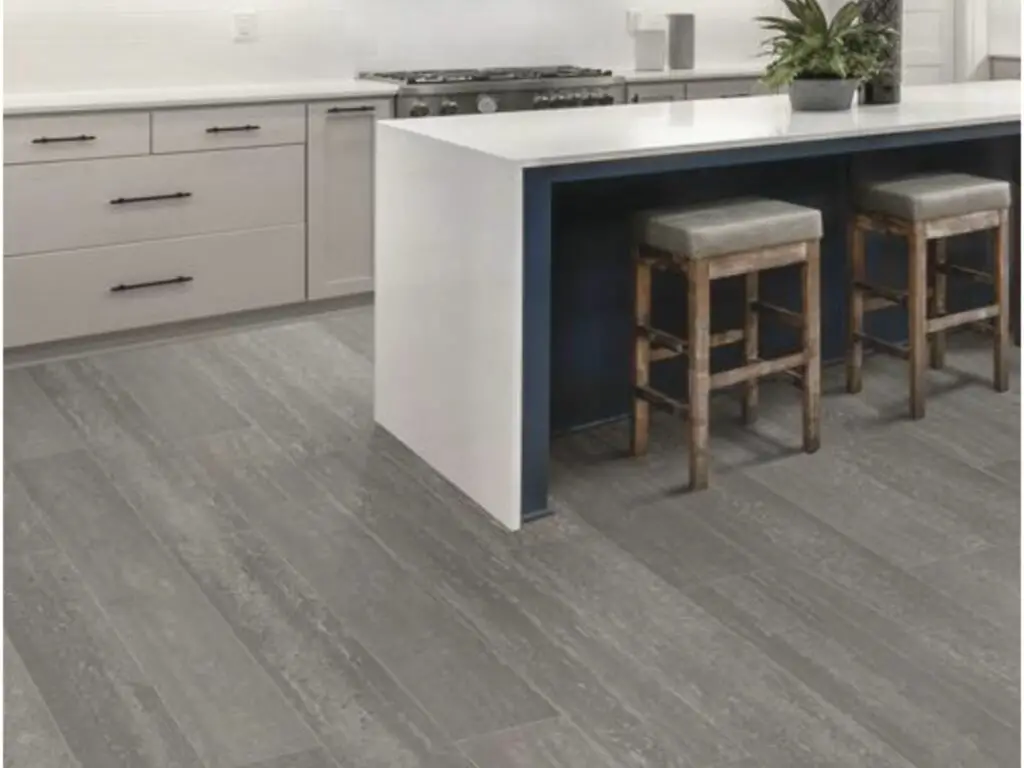
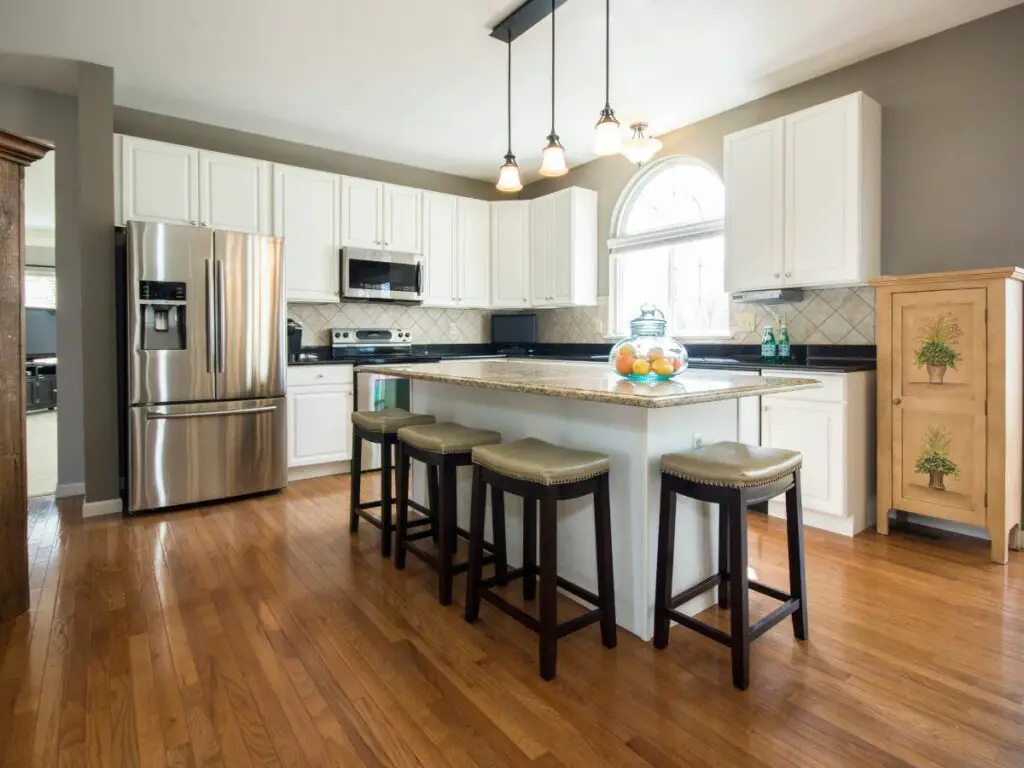
Drawback Six: Waterfall Countertops Typically Only Use One Edge Style
The final drawback of a waterfall countertop over a regular countertop is that they typically only use one style of edge.
Waterfall islands typically look best with square edges only (though other edges can be done for an extra cost). If the square edge look isn’t your favorite, then you won’t have many options.
Regular countertops can have different edges on the countertop if desired (such as bullnose), so you can create your favorite look in your kitchen.
It’s a small drawback, but it’s a drawback nonetheless.
Other FAQs About Waterfall Countertops
Here are some other frequently asked questions about waterfall countertops to help you determine if one is right for your kitchen island.
How Thick Is A Waterfall Countertop?
Waterfall countertops are typically 2-3 inches thick on all sides. The side pieces of waterfall countertops are the same as the top piece of material. They are just siliconed and epoxied together to make them look like one seamless piece.
Can You Do A Waterfall Countertop With Laminate?
Waterfall countertops are not typically made out of laminate, wood, or concrete. They are usually made out of quartz because the pattern is manufactured to seamlessly carry onto the sides, and it is cheaper than other stone options. But they also can be made out of granite or marble.
Can You Convert An Island To A Waterfall?
An island can be converted to a waterfall by removing the existing countertop and installing a new waterfall countertop over the existing cabinets.
Final Thoughts On Waterfall Countertops
There you have it!
For luxury homes, waterfall countertops are often worth it because they are expected. For regular homes, waterfall countertops can help to make the home look more high-end, but they are not going to add additional value than a regular countertop would. So the extra expense if oftentimes not worth it.
Hopefully, this guide helped you determine whether a waterfall countertop is worth it in your home or not.
Catch you in my next post!
The Best Kitchen Tools & Products I’ve Used
Ravinte Cabinet Handle Installation Template (For Doors & Drawers)
This is my all-time favorite handle installation template because it has two templates (one for drawers and one for doors) with multiple pull sizes & knob placements! These templates make installing cabinet handles a breeze because you always know your handles will be installed in the same spot on all of your drawers and doors. The kit also comes with a drill bit so you can guarantee you’re using the correct size. I used this template on my entire kitchen and both bathrooms to cut the installation time in half. You can find this hardware template here on Amazon.
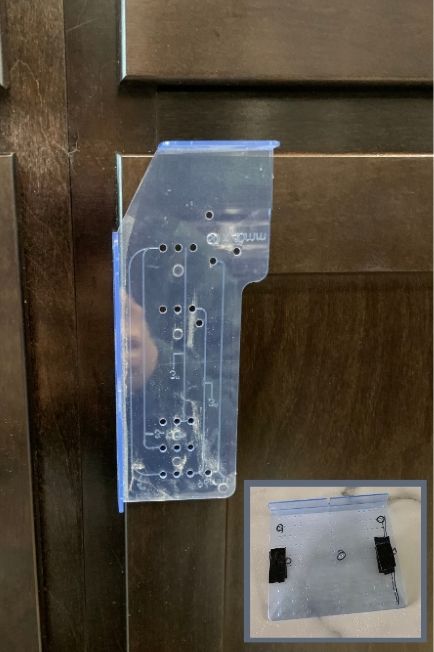

Franklin Brass 5-1/16 Inch (128mm) Center Bar Pull (Stainless Steel)
If you want to immediately modernize your kitchen island, then these cabinet pulls are a must. They are heavy-duty feeling, durable, easy to install, and are a large size for a great price. We put these pulls on all of our kitchen and island doors and drawers along with our bathroom doors and drawers. You can find these gorgeous cabinet pulls here on Amazon.
P.S. Use the hardware installation template I mentioned above to install these new pulls in record time!
If you’ve been curious about how we are decorating our 1950s Ranch, you should check out our “Shop Our Home” page. You can find products that we’ve personally bought to decorate our home.
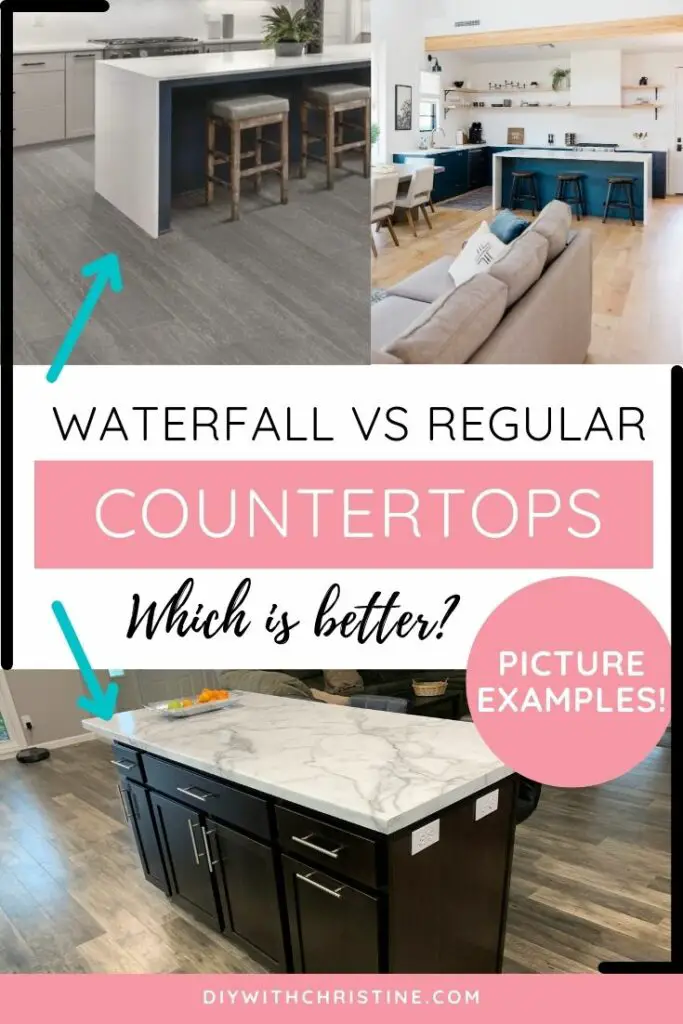

By Christine
Christine is a blogger and DIYer who tackles home renovation and decorating projects alongside her husband, Adam, for their personal residence and rental properties. Although she successfully tackles large renovation projects to avoid expensive contractor fees and bring her vision to life now, her path to success was not easy.
Go here to read her story, “From a Clueless First-Time Homebuyer To A Confident DIYer Creating Her Dream Home One Project At A Time“.
Popular Posts
DIY With Christine is a participant in the Amazon Services LLC Associates Program, an affiliate advertising program designed to provide a means for sites to earn advertising fees by advertising and linking to Amazon.com.






